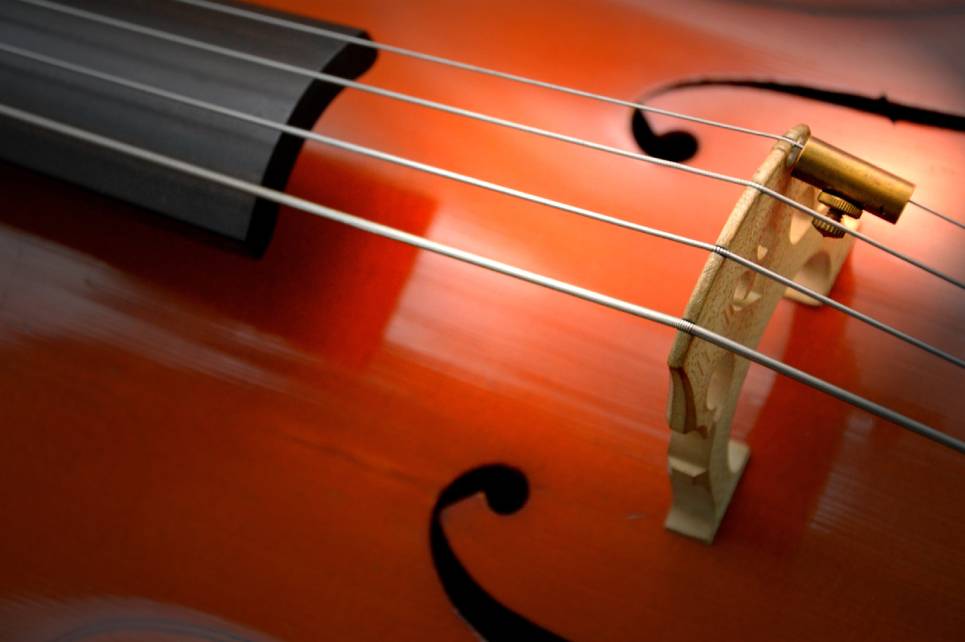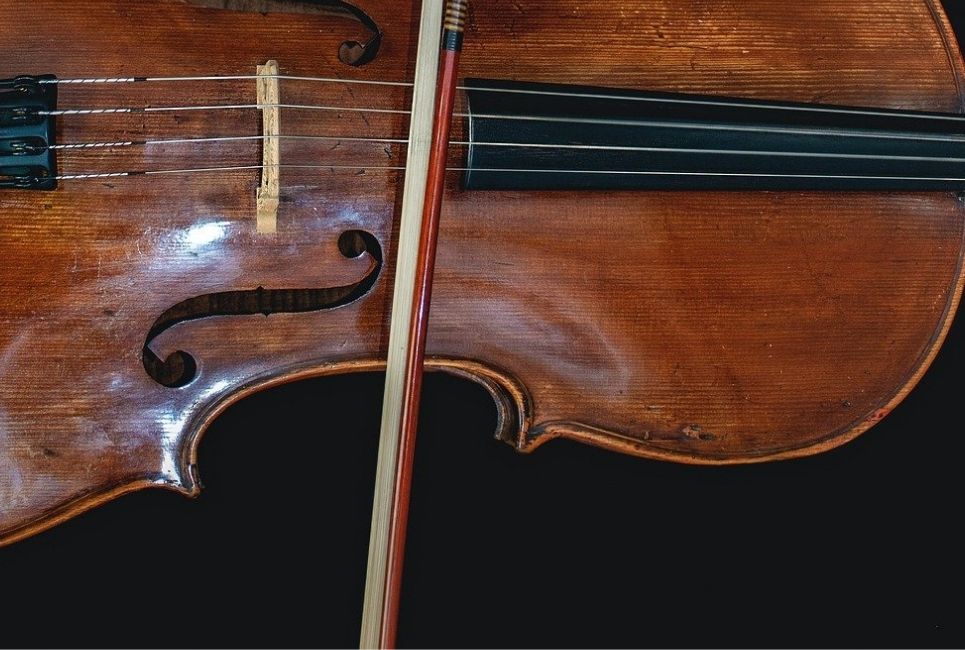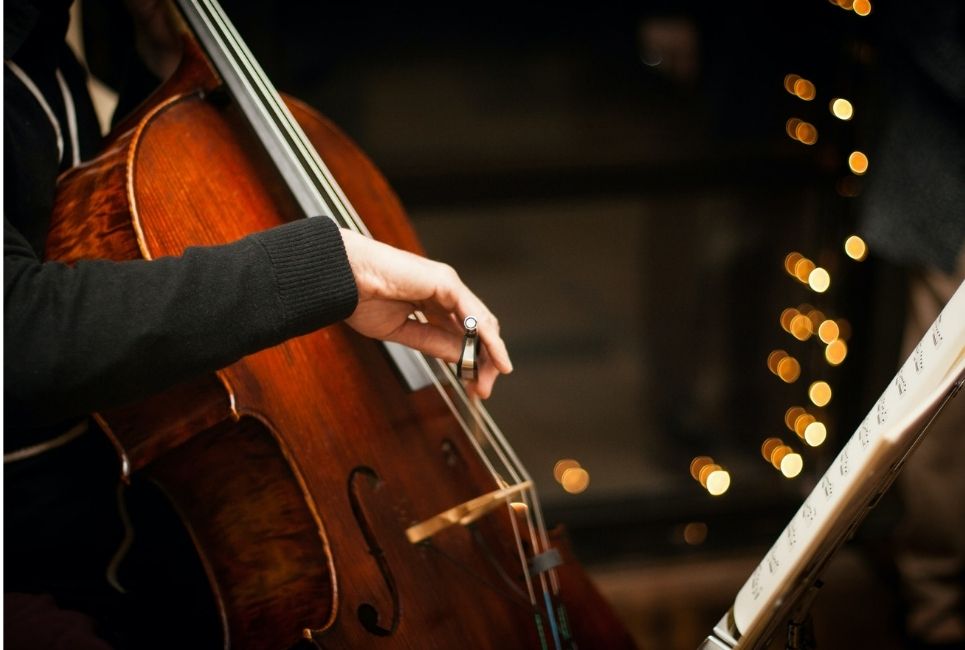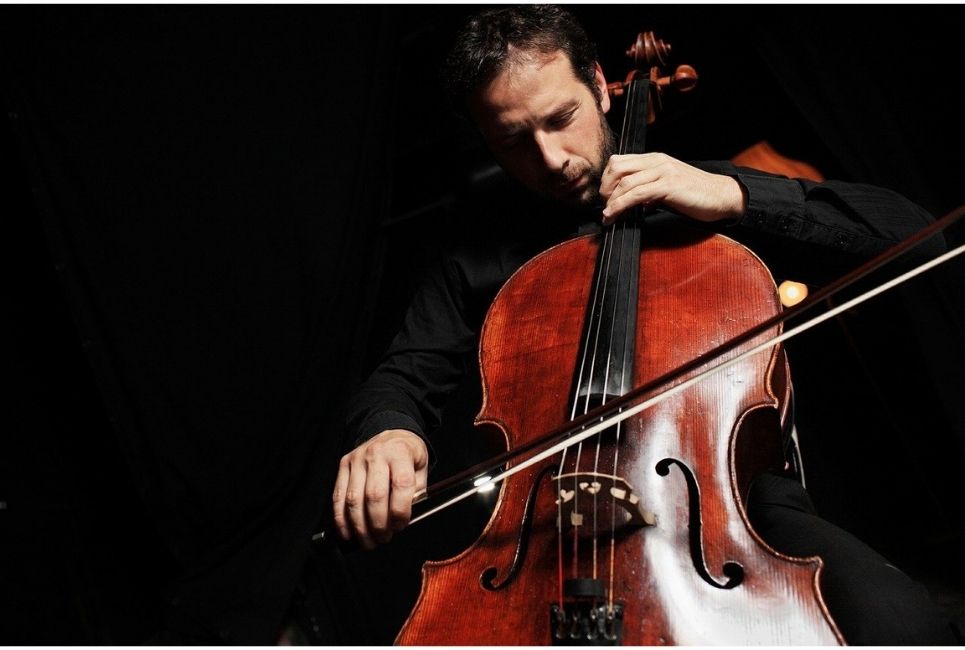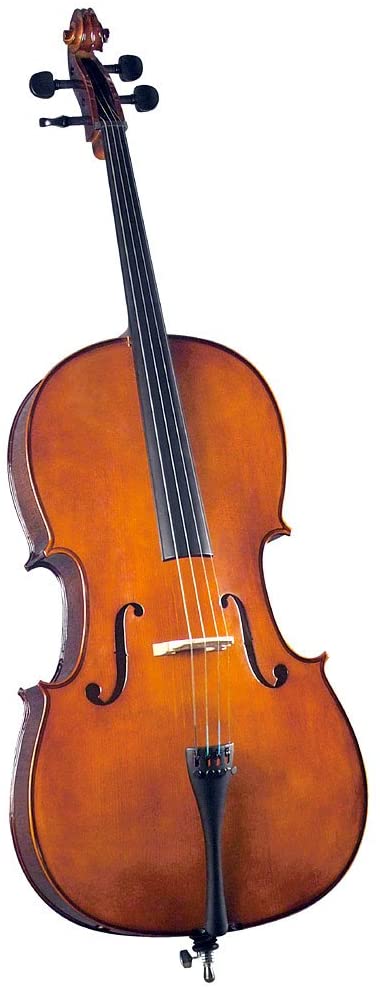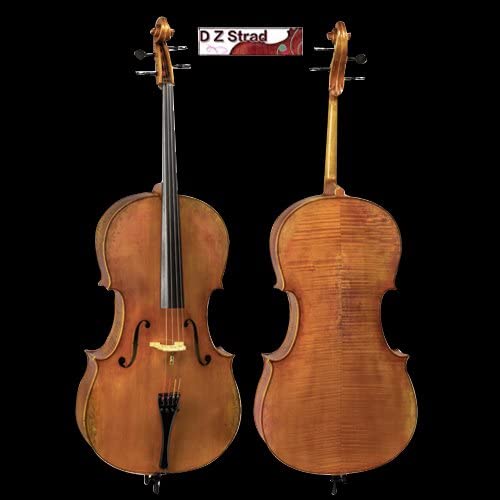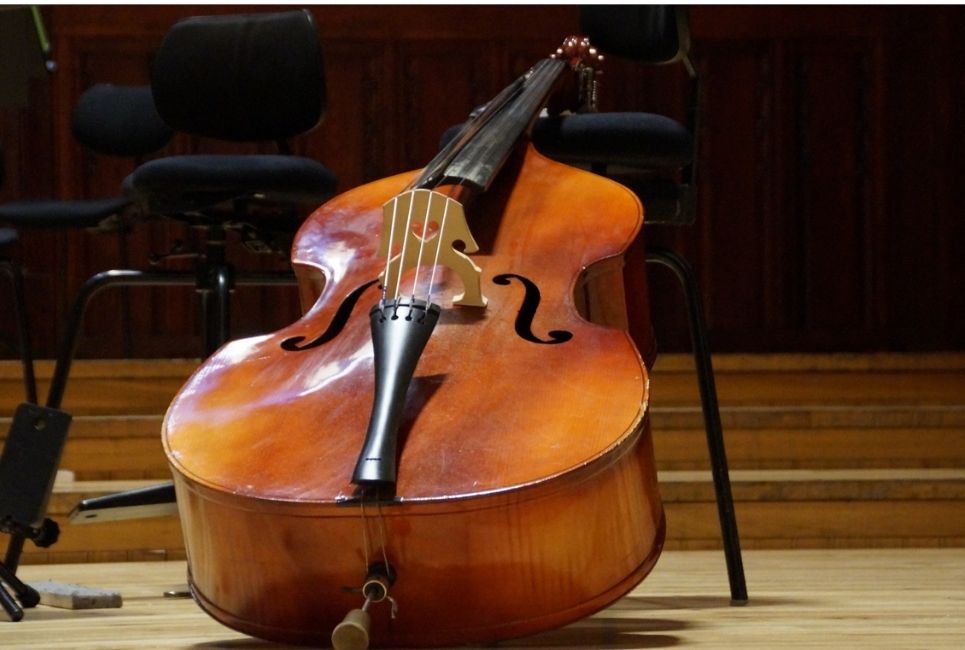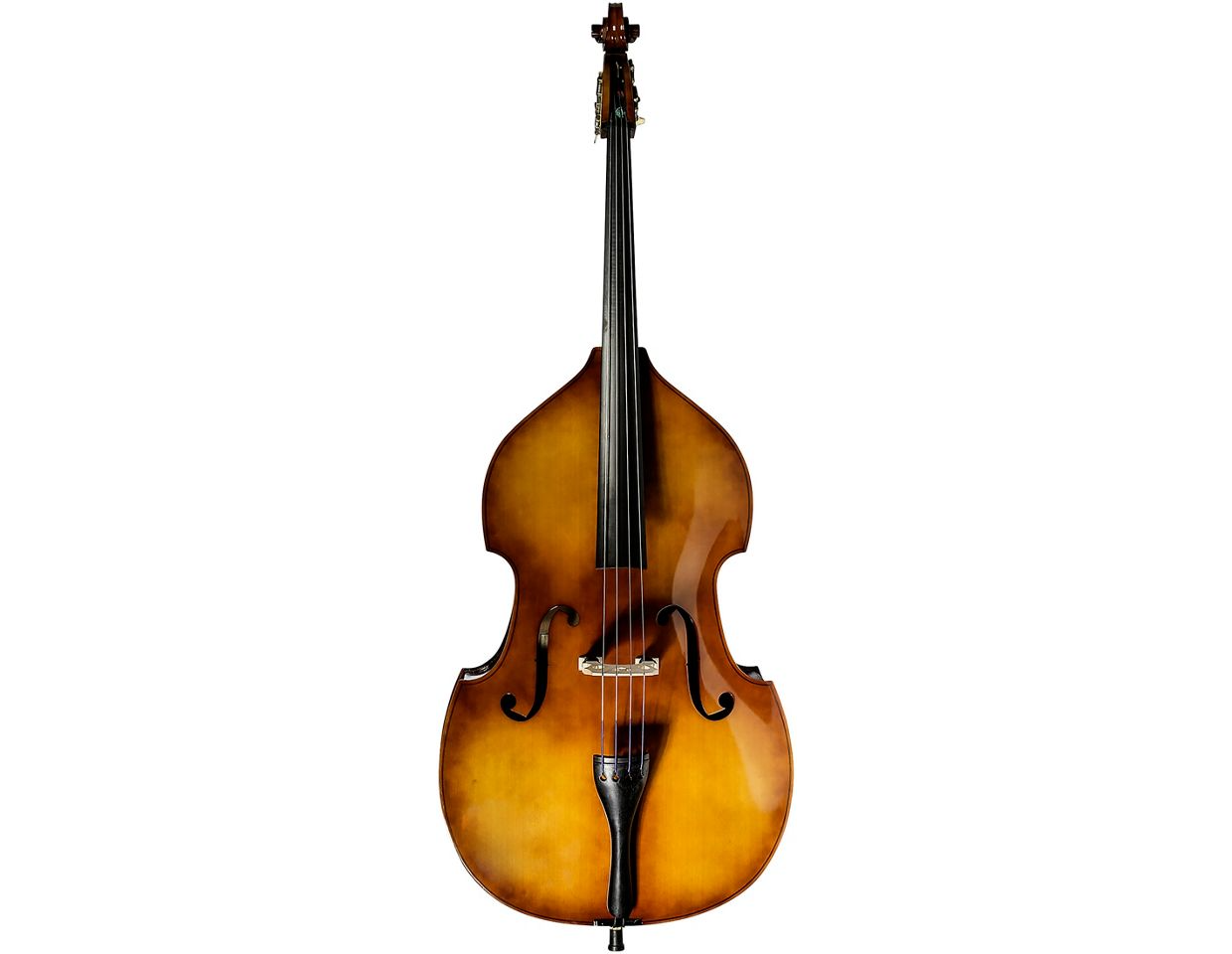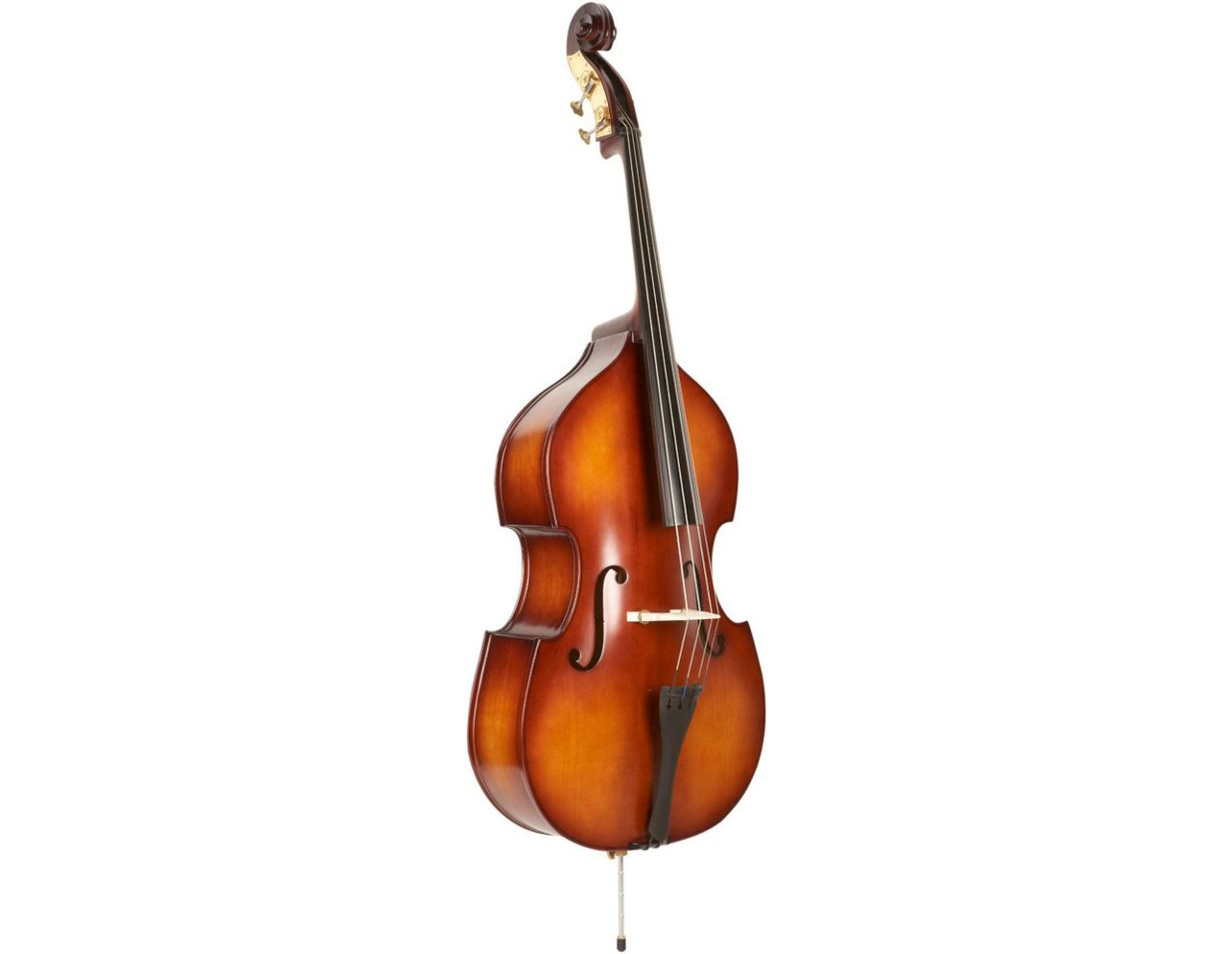- Cecilio CCO 400 Review and Guide - February 21, 2022
- Cecilio CCO 500 Review and Guide - February 17, 2022
- Cecilio CCO 600 Review and Guide - February 9, 2022
When you buy an item using one of our links, we may earn a portion of the sale. Strings Guide and some products featured on the site are owned by the same company. Learn More.
Do you want to play a low-string instrument or write a piece of music for one? Before you decide between the two, you should read about the cello vs. bass explained.
Then, you can learn about the details of each string instrument. Knowing that will help you decide which instrument best fills your needs.
The Main Differences Between Cellos and Basses
The main differences between cellos and basses are:
- The cello has a tenor range, whereas the bass has a lower, bass range
- The cello sounds exactly as written, whereas the bass sounds an octave lower than written
- The cello strings are perfect fifths apart, whereas the bass strings are perfect fourths apart
- The cello plays many roles in an orchestra, whereas the bass almost always has the bass line
- The cello requires players to sit on a chair, whereas the bass either requires players to stand or sit on a stool
But what do these differences mean in practice?
Range
The range of the cello starts at the C two octaves below middle C (C2). You can play up to the C two octaves above middle C (C6). To make reading those notes easier, cello music can use both bass clef and tenor clef.
On the other hand, the string bass can play from the written E almost two octaves below middle C (E2). Some basses have a low Eb extender, allowing the player to play down to written Eb2.
The highest note most players can hit is the written G above middle C (G4). However, some bassists can play an octave higher or more with practice.
Transposition
The cello is one of many instruments that are in the key of C, or concert pitch. That means the notes you see on a page of cello sheet music are the same as the pitches you hear when you play that music.
However, the double bass is a transposing instrument. It’s technically in the key of C. Notes on the bass sound one octave lower than written.
That’s important for composers who want to write excellent bass parts. Bass players should also understand the transposition if they ever want to learn music for the cello or if they want to experiment with other pieces.
Open Strings
Because of the different ranges, the notes you get from the open strings on the cello vs bass are different. However, the intervals between those notes also aren’t the same.
On the cello (along with the violin and viola), notes are a perfect fifth apart. The cello’s open strings play the notes C, G, D, and A.
However, the bass’s open strings are a perfect fourth apart. You can play the notes E, A, D, and G without pressing down the strings on the bass. The smaller intervals make it easier for bass players to reach the positions on the fingerboard.
This difference matters because it can affect how you play the instrument. Switching from viola to the cello is easy because the strings are all the same, just an octave apart. But the bass is quite different from other orchestral strings.
Role
In ensembles, the cello and bass serve similar roles, but those roles can differ. For example, the string bass almost always plays the bass line since it’s the lowest-pitched instrument in the orchestra.
The cello often plays the bass line, especially in smaller ensembles, such as string quartets. Basses aren’t part of that instrumentation, so the cello covers the lowest part.
Cellos can also sometimes have the melody or harmony line, even in a full ensemble. When choosing between the cello vs. bass, you should consider how each instrument fits in.
You also won’t find cellos in jazz groups as often as basses. So if you like to play a lot of different genres, a double bass may be the better instrument for you.
Playing Position
Another difference that may make or break your choice between the cello and bass is how you position yourself. Both instruments require you to place the fingerboard over your left shoulder.
However, you almost always sit on a regular chair to play the cello, with some rare exceptions. When you play the string bass, you can sit on a stool that’s a bit higher than a chair.
You might also stand, especially if you’re performing as a soloist or in a jazz band. That can make it easier for you to move around, and you don’t need to provide your own stool to play.
Depending on the setting, you may need to bring a stool if you want to use one. Meanwhile, most orchestras and rehearsal spaces provide standard chairs for cellists to use.
What To Consider When Choosing A String Instrument
Having the cello vs. bass explained is advantageous, but it may not help you choose which instrument to play or use in your next composition. Fortunately, the differences between the instruments can help you.
Use the differences and compare them to what you like or don’t like about music. Then, you may be able to decide if you should play the cello or bass.
Here are some things you can think about to help make your decision.
Your Size
Both the cello and bass come in different sizes to fit players of all ages and heights. However, a bass is always more cumbersome than a cello of the same size.
If you’re shorter or have short arms or small hands, you may want to stick to the cello. The bass can be tough to play when you don’t have the height necessary to reach all of the notes.
You also may want to consider how strong you are and if you’re able to transport a bass. Cellos aren’t much larger than acoustic guitars, so most people can carry a cello, but the bass is another story.
Your Budget
Good quality student cellos start at around $1,000, give or take a few hundred dollars. At the professional level, you can expect to spend closer to $10,000 for a good cello.
You can find student upright basses for about the same price, but the quality may not be the same. To keep the quality on par, you should prepare to spend about $1,700 for a good student bass.
If you upgrade to a professional bass, you may need to pay over $10,000. I had a music teacher who knew a bass player whose instrument cost $17,000.
When you’re on a tight budget, you may want to stick to a cello. That way, you can get a good instrument without having to spend more than you can afford.
Your Interests
Another factor to consider when deciding between the cello and bass is which instrument interests you and what music interests you more. Then, you can use that to guide your choice.
String basses are common in orchestras, but you can also find them in jazz bands and jazz combos. Some wind ensemble music also calls for a string bass part.
On the other hand, cellos are more popular in classical ensembles, such as the orchestra and string quartet. You’ll also find more solo music for the cello than the double bass.
Your Access
Sometimes, you may only have access to one instrument or the other. If you can’t afford to buy your own instrument, you may have to play what the school or community ensemble you join provides.
For example, some elementary schools don’t offer the string bass to students, even when they can get their own. On the other hand, a college or community ensemble may assume that cellists own their instruments.
But they may have string basses available for you to borrow. Even if you have a preference for one instrument, you may have to go with the other just to get a part in a group so that you can learn something.
Your Preference
Perhaps you have the budget to afford either instrument, and you have access to buy or rent either one. You’re tall enough to handle the cello or the bass.
Now, it can come down to the instrument you prefer. The cello and bass can sound gorgeous in their low registers, but the cello offers more flexibility in the middle and upper range.
So if you want that flexibility, the cello might make more sense for you. And if you do prefer the cello, you can make it work in a variety of genres, even if it’s not the norm.
Why Play The Cello
The cello has one of the biggest libraries of repertoire, including solo, chamber, and orchestral parts. Whether you want to play Baroque music by Bach and Handel or contemporary music by George Crumb, you can find something you like.
It’s also an excellent instrument for different ensembles along with solo playing. If you like to play with different groups, odds are you’ll be able to with the cello.
And while it is bigger than the violin or viola, it’s not too big for most people to carry. So if you need or want to go to rehearsals and performances, you can take your cello.
Another reason to play the cello is if you want to enter music competitions. Some competitions are open to bass players, but you may have a better chance, especially when it comes to concerto competitions due to the repertoire you have.
Best Cellos
If you realize that you want to play cello, you need to get a good instrument. While there are plenty of cellos available, not all of them are worth your time and money.
Give the following models a try so that you can find a cello that works for you. Then, you’ll be able to learn the basic and progress to an advanced level.
Cremona SC-130
The Cremona SC-130 cello is an amazing model that you can use as a beginner cellist. It features all solid tonewoods to help give you a warm sound, and it’s lightweight so easy to hold.
This model features strings at the optimum height for a combination of sound and feel. Plus, you can choose from different sizes to make sure the instrument is comfortable. Sizes include:
- 1/4
- 1/2
- 3/4
- 4/4
If you’re on a tight budget and want to make sure you like playing the cello before spending more, this cello is great. While it’s not the cheapest model, it combines quality with affordability.
Pros
- Great for beginners
- Good sound
- Durable
Cons
- A bit expensive
D Z Strad 101
Another fantastic beginner model to check out is the D Z Strad 101. This cello is handmade, even at the beginner level, so you can get the best quality and sound possible.
It comes with a bow, rosin, and a set of strings so that you can start playing immediately. Plus, everything comes in a protective cello case for storage and transportation.
Like the Cremona model, you can choose the correct size for you. This cello comes in sizes 1/8, 1/4, 1/2, 3/4, and 4/4, and it’s worth the cost to set you up for musical success.
Pros
- Good for new players
- Handmade
- Nice sound
Cons
- Expensive
D Z Strad 700
If you’re looking for a more professional cello, you can’t go wrong with the D Z Strad 700. This model is handmade and perfect for advancing musicians.
It uses maple and spruce for the body to help give you a fantastic sound. D Z Strad luthiers set the cello up with a full set of strings, so the cello is ready to play.
Unfortunately, this model is only available in the 4/4 size, and it’s pretty expensive. But it’s a good option if you need a professional instrument and can’t afford to spend a ton more.
Pros
- Good sound
- Durable
- Handmade
Cons
- Only one size
Why Play The Bass
If you hate competition, you may find that the upright bass is a better fit. The instrument isn’t as common as the cello, so you may have a better chance of getting into an orchestra or jazz band.
Playing the bass is also the better choice if you like to focus on the bass line. Then, you may be able to play more difficult ensemble pieces, even when you’re still working on your solo technique.
Many bass parts involve whole notes and don’t move as quickly as the cello. So you can take your time learning how to play the bass before you play more technical pieces.
Another excellent reason to play the bass is if you want to play more than classical music. The instrument is equally at home in classical and jazz, and you can use the same fingerings to learn the electric bass.
Best Basses
If you would prefer to play the bass, you need a good instrument. Fortunately, you can find a few options that may serve your needs.
Consider the following models to help narrow your search.
Cecilio CDB Upright Double Bass
The Cecilio CDB Upright Double Bass is an excellent model for beginners and anyone on a budget. It also looks cool with a black finish, so you’re sure to stand out on stage.
Unfortunately, an orchestra director may not allow you to play a black bass since it does look different. Still, this can be a great instrument to practice on at home.
It has an ebony body which can offer a unique sound compared to other string instruments. Plus, the nylon strings are great for beginners who have yet to build up their finger strength.
Pros
- Affordable
- Looks unique
- Sounds good
Cons
- Not for ensemble playing
Strobel MB-75
Unfortunately, Amazon doesn’t have a huge inventory of basses. If you’re willing to shop elsewhere, you get a Strobel MB-75 model.
The bass looks and sounds fantastic, and it’s suitable for beginners. Plus, it comes in different sizes, so you don’t have to be super tall or have long arms to play it.
While it’s more expensive than some basses, it’s not nearly as costly as others. You can get it to make a good compromise between price and quality.
Pros
- Great for students
- Comes in different sizes
- Good quality
Cons
- Not available on Amazon
Cremona SB-2
Another bass you won’t find on Amazon but is still worth trying is the Cremona SB-2. This model is another student instrument, so it’s more affordable than some basses.
You can use this instrument in an orchestra, jazz band, and other genres. It looks and sounds amazing, so it can be a great tool to help you start learning how to play the bass.
Spruce and maple make up the body, and there are ebony fittings. Those materials help the instrument produce a good sound, and you can play this model for a long time.
Pros
- Good sound
- Affordable
- Versatile
Cons
- Not on Amazon
FAQs About Cello Vs. Bass Explained
Answer: The easier instrument to play can depend on the player. Many people may find the cello is less challenging because it’s smaller than the bass and doesn’t require as much distance to reach between notes.
However, bass parts in orchestras aren’t as technically demanding as cello parts. So if you can reach the notes, you may find the bass is easier. Liking the instrument you choose can also make playing better because you’ll want to practice.
Answer: The cello is better than the bass for most beginners. Aside from the smaller size, it’s easier to get ahold of a good cello to start learning how to play.
Basses may also not be an option if you or your child is learning music in a beginning school orchestra. At least in the district where I grew up, you couldn’t start playing the bass until middle school, while the cello was available in fourth grade.
Answer: Cellos and basses are expensive because they both require more materials than other instruments. The materials add to the cost, but so does the time it takes to build the instrument.
And if you buy a handmade instrument, that will cost more than a machine-made model. String instruments can also be expensive if they’re older since they may use great-sounding wood that you won’t find on new instruments.
Answer: The cello and bass are both part of the standard orchestra, so neither is better than the other. Instead, ask yourself what role you want to play in the ensemble.
If you want to play the low, rumbly bass line, the string bass is for you. But if you like to experiment with different lines, you may find the cello more fulfilling.
Answer: You can find a lot more solo cello music than solo bass music. While you can use bass transcriptions to play cello solos on the string bass, you may not want to do that.
If you know you want to focus on solo pieces, the cello is the better way to go. You’ll have more music to learn, and you may find it easier to book gigs as a solo cellist than a solo bassist.
Answer: You can fly with a cello or a bass, but it requires some planning. Many cellists and bassists will purchase an extra seat specifically for their instruments.
That keeps them from having to check the instrument and have it go under the cargo hold. The cargo hold doesn’t have the best climate control, and if your gear goes in first, it may get crushed under other luggage.
Final Note On Cello Vs. Bass Explained
Having the cello vs. bass explained can help you choose which instrument to play. If you prefer to compose, knowing the difference can help you use each instrument based on its strengths.
Overall, the cello is better for soloist classical music and for smaller players. Meanwhile, the bass is better for covering the bass line across classical, jazz, and other music genres.

